Are you someone who suffers from multiple sclerosis and is willing to do anything to reduce the intensity of your symptoms? Or do you find as if your MS medications make you feel heavier and dizzier than you do on normal days?
Well, worry and speak no more. As it turns out, Bestqool might have the least invasive yet effective means of treatment for you.
Presenting to you none other than our very own customized red light therapy for multiple sclerosis patients. Trust us on this: we indeed have all the healing powers of light in this therapy concentrated on providing you with the best results and remissions in the long run.
So, let's dive right into learning more about the life-changing powers of red light therapy for multiple sclerosis.
What Is Multiple Sclerosis?

Multiple sclerosis, or MS, is a chronic inflammatory disease. Since it is an autoimmune disease, the body's immune system employs some other body cells and gets to work on demyelination or the removal of myelin from the neuronal fibers. [1]
This demyelination leads to several problems within an individual, ranging from mood disorders to muscular dysfunctions and a lot more.
What Are the Symptoms of Multiple Sclerosis?
Usually, multiple sclerosis begins around the age of 20 to 40 years. When it manifests in an individual, it usually takes on a relapsing remitting course. [2]
This implies that multiple sclerosis patients keep experiencing new symptoms or complete relapses over periods of time.
Some of the most common symptoms of multiple sclerosis include:
- A numbness or weakness that characteristically affectsonly one side of the body
- An electric-shock like feeling that occurs with certain neck movements (Lhermitte sign)
- An unsteady gait that might also lead to an inability to walk
- Complete or partial loss of vision in one eye, often accompanied bypain during eye movements
- Bladder, bowel, and sexual dysfunction
Although not necessary, there are some other symptoms too, that might be associated with different intensities of the disease. You can further read about those signs and symptoms here.
However, the disease in itself is very debilitating and restricting for the person affected by it. But, the interesting part is that apart from using routine medications to treat this condition, people can also opt for red light therapy to ease their symptoms and make their lives easier. [3]
Wondering how? Well, keep reading, and you shall know soon enough.

The Red Light Therapy - An Overview
If you are new to the world of red light therapy and its wonderful applications, then no need to fret at all. We will guide you all through it and make sure that you are well aware of the amazing and limitless potential of this therapeutic innovation.
In simple words, red light therapy is the art of using low-level red or near-infrared light to stimulate the function of the cells. In advanced medical terminology, it is also known as Low-Level Laser Therapy (LLLT) or Photobiomodulation (PBM). [4][5]
This red light therapy allows the mitochondria, or the powerhouse of the cell, to get activated and perform its function in a more enhanced way.
Normally, these mitochondria are associated with the production of energy in a cell, and so, when the red light activates them further, the production of ATP or the energy-producing molecules is increased even more.
How Does Red Light Therapy Help in Maintaining Our Health?
Over time, it has helped several people get benefits through its different applications, some of which have been listed as follows:
- Promoting Wound Healing:
It may accelerate the healing of wounds and injuries.
- Alleviating Pain:
It could help manage pain, particularly in conditions like arthritis.
- Improving Skin Health:
It may enhance collagen production and improve skin tone.
- Supporting Muscle Recovery:
Athletes sometimes use red light therapy to aid in muscle recovery.
- Reducing Inflammation:
It may have anti-inflammatory effects that help tone down the inflammatory processes in the body.
All in all, red light therapy has several benefits to offer to all adult people. All you need is good research and insight into its uses to know how it can benefit you in the long run.
Red Light Therapy and Multiple Sclerosis
As discussed earlier, routine medications for multiple sclerosis might have a myriad of unwanted side effects and adverse reactions that nobody would want to face during their routine life.
There are also several people who do not benefit much from the traditional means of treatment, and so are always on the lookout for something that could make their lives easier while at the same time ensuring that these newer treatments do not mess up with their metabolism or health more adversely.
Turns out, the red light therapy could help people with multiple sclerosis. Since it is an established fact that infrared light can penetrate the human skin and the layers beneath, it was easier to study the effect of red light on the human body. [6]
In the scenario of multiple sclerosis, it was found that this infrared light could play an important role in protecting the nerve cells.
Since multiple sclerosis is a condition that results in the demyelination and eventual destruction of nerve cells, this impact of infrared light could be greatly helpful in protecting the mitochondria and the entire structure of the nerve cell as a whole. [7]
This helps keep the remaining nerve cells intact and in good shape and also helps protect the damaged ones from further damage. The red light therapy devices at Bestqool might be your best shot for this.
Furthermore, the associated symptoms of Multiple Sclerosis, such as pain, inflammation, and weakness, could also be taken care of using the potential of red light. However, one thing to keep in mind is that red light therapy should not be advocated as a duplicate of conventional treatments.
Summary
In a nutshell, we can say that red light therapy is indeed a great way of putting your exacerbated multiple sclerosis symptoms to rest. It is a safe, effective, and low-maintenance means of keeping your symptoms in check. However, you need to be very vigilant and take care that it does not end up doing worse than good to you. If you have an uncontrolled form of the disease, then it might be great to keep your doctor in the loop before trying any other mode of treatment.
Explore Bestqool products that utilize the power of light to potentially alleviate discomfort, all without the typical drawbacks associated with medications or invasive treatments. Embrace a path towards improving your well-being through nonintrusive therapy!
Sources And References:
[1] Tafti D, Ehsan M, Xixis KL. Multiple Sclerosis. [Updated 2022 Sep 7]. In: StatPearls [Internet]. Treasure Island (FL): StatPearls Publishing; 2023 Jan-. Available from: https://www.ncbi.nlm.nih.gov/books/NBK499849/
[2] Ghasemi, N., Razavi, S., & Nikzad, E. (2017). Multiple Sclerosis: Pathogenesis, Symptoms, Diagnoses and Cell-Based Therapy. Cell journal, 19(1), 1–10. https://doi.org/10.22074/cellj.2016.4867
[3] Glass G. E. (2021). Photobiomodulation: The Clinical Applications of Low-Level Light Therapy. Aesthetic surgery journal, 41(6), 723–738. https://doi.org/10.1093/asj/sjab025
[4] Cotler, H. B., Chow, R. T., Hamblin, M. R., & Carroll, J. (2015). The Use of Low Level Laser Therapy (LLLT) For Musculoskeletal Pain. MOJ orthopedics & rheumatology, 2(5), 00068. https://doi.org/10.15406/mojor.2015.02.00068
[5] Yang, M., Yang, Z., Wang, P., & Sun, Z. (2021). Current application and future directions of photobiomodulation in central nervous diseases. Neural regeneration research, 16(6), 1177–1185. https://doi.org/10.4103/1673-5374.300486
[6] Hossein-Khannazer, N., Kazem Arki, M., Keramatinia, A., & Rezaei-Tavirani, M. (2021). The Role of Low-Level Laser Therapy in the Treatment of Multiple Sclerosis: A Review Study. Journal of lasers in medical sciences, 12, e88. https://doi.org/10.34172/jlms.2021.88
[7] Mateen, F. J., Manalo, N. C., Grundy, S. J., Houghton, M. A., Hotan, G. C., Erickson, H., & Videnovic, A. (2017). Light therapy for multiple sclerosis-associated fatigue: Study protocol for a randomized controlled trial. Medicine, 96(36), e8037. https://doi.org/10.1097/MD.0000000000008037



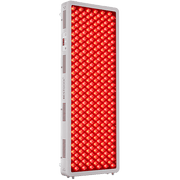








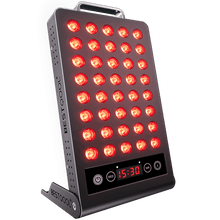
 Small
Small
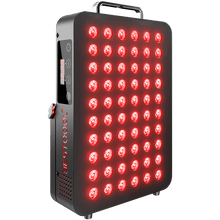
 Moderate
Moderate
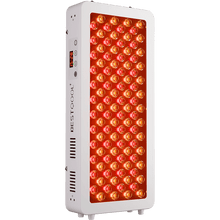
 Moderate
Moderate
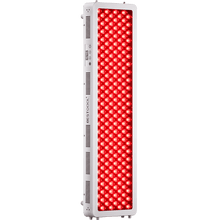
 Moderate
Moderate
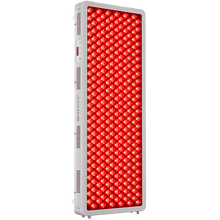
 Full
Full



